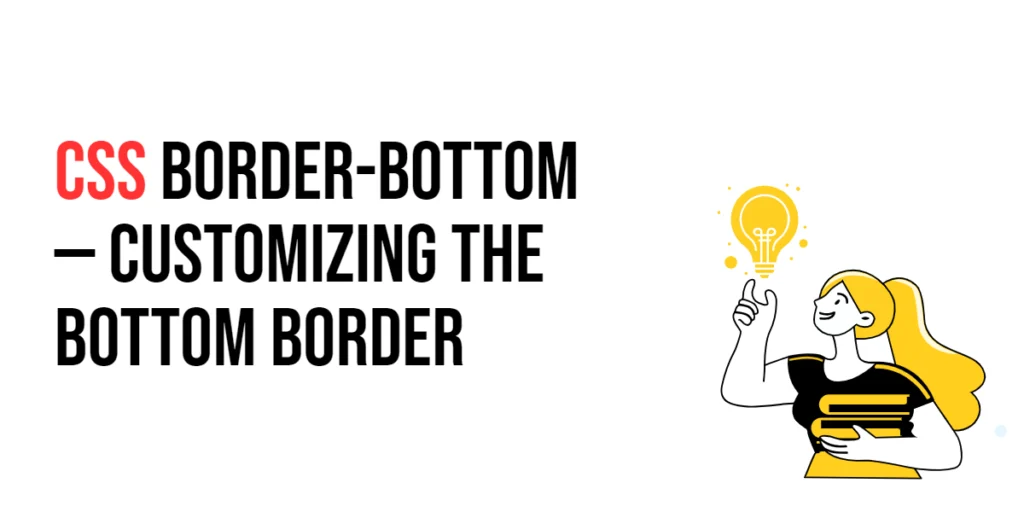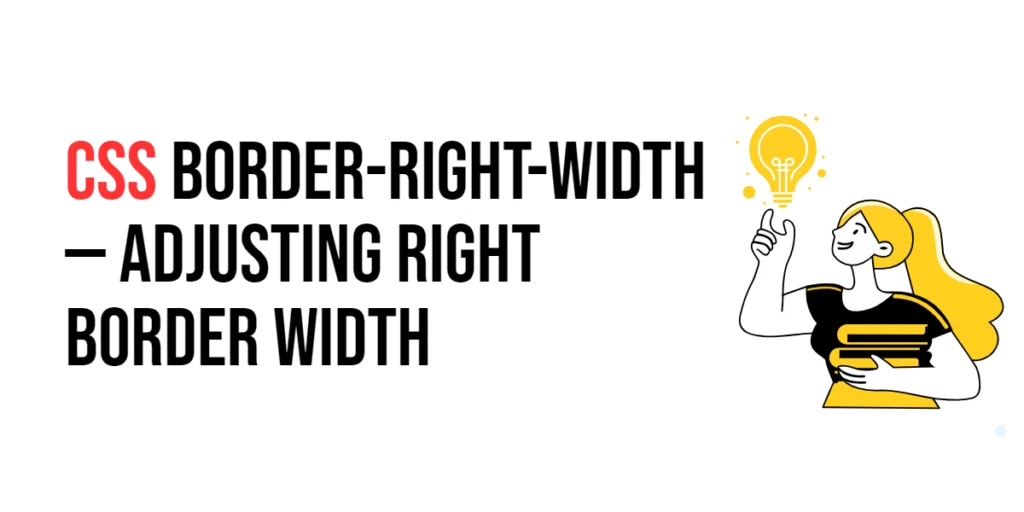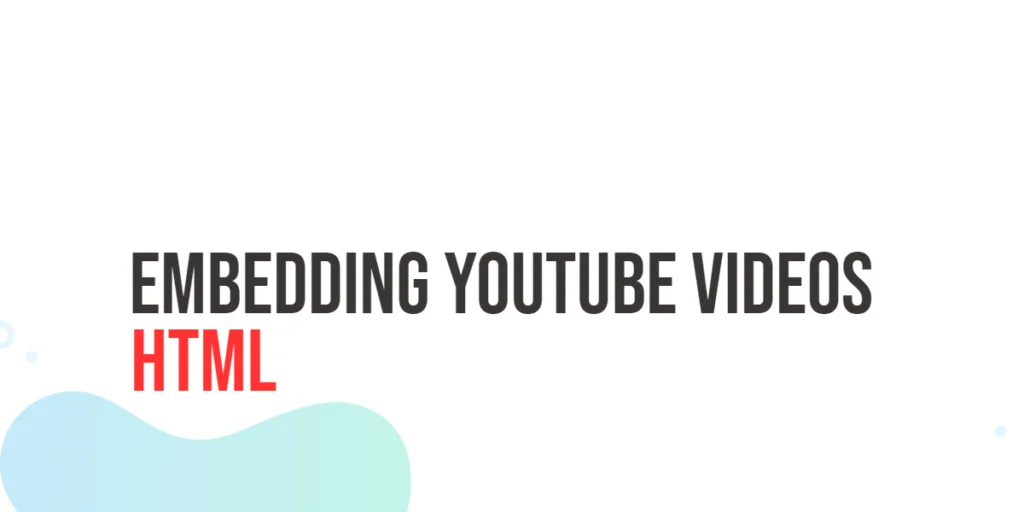The border-bottom property in CSS is used to customize the bottom border of an HTML element. It allows developers to define the width, style, and color of the bottom border, enhancing the visual appearance of elements on a webpage. Customizing the bottom border can be particularly useful for creating underlined text effects, highlighting sections, or adding a distinctive style to the bottom edge of elements.
Styling the bottom border is an important aspect of web design because it helps in emphasizing content, separating sections, and creating visual interest. Well-designed bottom borders can make a website look professional and polished, contributing to a better user experience. This article will explore the principles of the border-bottom property in CSS, provide practical examples, and discuss best practices for its implementation. By the end of this article, you will have a comprehensive understanding of how to customize the bottom border effectively.
Understanding the Border-Bottom Property in CSS
The border-bottom property in CSS is a shorthand property for setting the bottom border width, style, and color of an element. It allows you to apply these properties in a single declaration, making the code more concise and readable.
<!DOCTYPE html>
<html lang="en">
<head>
<meta charset="UTF-8">
<meta name="viewport" content="width=device-width, initial-scale=1.0">
<style>
.basic-border-bottom {
border-bottom: 3px solid black;
padding: 10px;
width: 200px;
text-align: center;
}
</style>
<title>Basic Border-Bottom Usage</title>
</head>
<body>
<div class="basic-border-bottom">Basic Border-Bottom</div>
</body>
</html>In this example, the .basic-border-bottom class applies a bottom border that is 3 pixels wide, solid in style, and black in color. This basic usage demonstrates how to use the border-bottom property to define the bottom border of an element.
Using Border-Bottom Styles
CSS provides various border styles that can be applied to the bottom border. These include solid, dashed, dotted, double, groove, ridge, inset, and outset.
<!DOCTYPE html>
<html lang="en">
<head>
<meta charset="UTF-8">
<meta name="viewport" content="width=device-width, initial-scale=1.0">
<style>
div {
margin: 20px 5px;
}
.solid-bottom {
border-bottom: 3px solid black;
}
.dashed-bottom {
border-bottom: 3px dashed black;
}
.dotted-bottom {
border-bottom: 3px dotted black;
}
</style>
<title>Border-Bottom Styles</title>
</head>
<body>
<div class="solid-bottom">Solid Bottom Border</div>
<div class="dashed-bottom">Dashed Bottom Border</div>
<div class="dotted-bottom">Dotted Bottom Border</div>
</body>
</html>In this example, three different border styles are applied to the bottom border of the elements. The .solid-bottom class uses a solid border, the .dashed-bottom class uses a dashed border, and the .dotted-bottom class uses a dotted border. These styles demonstrate the variety of visual effects that can be achieved using the border-bottom property.
Adjusting Border-Bottom Width
The border-bottom-width property allows you to set the thickness of the bottom border. It can be specified using length units (e.g., pixels, ems) or predefined keywords (thin, medium, thick).
<!DOCTYPE html>
<html lang="en">
<head>
<meta charset="UTF-8">
<meta name="viewport" content="width=device-width, initial-scale=1.0">
<style>
div {
margin: 20px 5px;
}
.thin-bottom {
border-bottom-width: thin;
border-bottom-style: solid;
border-bottom-color: black;
}
.medium-bottom {
border-bottom-width: medium;
border-bottom-style: solid;
border-bottom-color: black;
}
.thick-bottom {
border-bottom-width: thick;
border-bottom-style: solid;
border-bottom-color: black;
}
</style>
<title>Border-Bottom Width</title>
</head>
<body>
<div class="thin-bottom">Thin Bottom Border</div>
<div class="medium-bottom">Medium Bottom Border</div>
<div class="thick-bottom">Thick Bottom Border</div>
</body>
</html>In this example, the .thin-bottom, .medium-bottom, and .thick-bottom classes use different bottom border widths. The thin, medium, and thick keywords demonstrate how to adjust the thickness of the bottom border.
Applying Border-Bottom Colors
The border-bottom-color property allows you to set the color of the bottom border. It can be specified using color names, hexadecimal values, RGB, RGBA, HSL, and HSLA values.
<!DOCTYPE html>
<html lang="en">
<head>
<meta charset="UTF-8">
<meta name="viewport" content="width=device-width, initial-scale=1.0">
<style>
div {
margin: 20px 5px;
}
.red-bottom {
border-bottom: 3px solid red;
}
.green-bottom {
border-bottom: 3px solid green;
}
.blue-bottom {
border-bottom: 3px solid blue;
}
</style>
<title>Border-Bottom Colors</title>
</head>
<body>
<div class="red-bottom">Red Bottom Border</div>
<div class="green-bottom">Green Bottom Border</div>
<div class="blue-bottom">Blue Bottom Border</div>
</body>
</html>In this example, the .red-bottom, .green-bottom, and .blue-bottom classes use different bottom border colors. The colors red, green, and blue demonstrate how to apply various colors to the bottom border.
Combining Border-Bottom with Other Border Properties
The border-bottom property can be used in conjunction with other border properties to create complex styles. This includes combining border-bottom with border-top, border-left, and border-right.
<!DOCTYPE html>
<html lang="en">
<head>
<meta charset="UTF-8">
<meta name="viewport" content="width=device-width, initial-scale=1.0">
<style>
.combined-borders {
border-top: 2px solid red;
border-right: 2px dashed green;
border-bottom: 4px double blue;
border-left: 2px dotted black;
padding: 10px;
width: 200px;
text-align: center;
}
</style>
<title>Combining Border-Bottom with Other Borders</title>
</head>
<body>
<div class="combined-borders">Combined Borders</div>
</body>
</html>In this example, the .combined-borders class combines different border styles for each side of the element. The top border is solid red, the right border is dashed green, the bottom border is double blue, and the left border is dotted black. This demonstrates how to use border-bottom in conjunction with other border properties to create complex border styles.
Best Practices for Customizing Border-Bottom
To effectively use the border-bottom property, it is important to follow best practices such as maintaining consistency, using appropriate border styles for different UI elements, and ensuring accessibility.
<!DOCTYPE html>
<html lang="en">
<head>
<meta charset="UTF-8">
<meta name="viewport" content="width=device-width, initial-scale=1.0">
<style>
.best-practices-bottom {
border-bottom: 3px solid #333;
padding: 10px;
width: 200px;
text-align: center;
margin: 10px auto;
}
</style>
<title>Best Practices for Border-Bottom</title>
</head>
<body>
<div class="best-practices-bottom">Consistent Bottom Border</div>
</body>
</html>In this example, the .best-practices-bottom class follows best practices by using a consistent bottom border style, applying a reasonable border width, and ensuring that the border color provides sufficient contrast. This approach helps maintain visual consistency and accessibility in web design.
Conclusion
The border-bottom property in CSS is a versatile tool for customizing the bottom border of HTML elements. By understanding and utilizing properties such as border-bottom-style, border-bottom-width, and border-bottom-color, you can create visually appealing and functional designs.
Experiment with different bottom border styles and techniques to see how they can enhance your web projects. For further learning, explore resources such as the MDN Web Docs on CSS borders. By continuing to practice and experiment, you will become proficient in using the border-bottom property to style the bottom border effectively.




